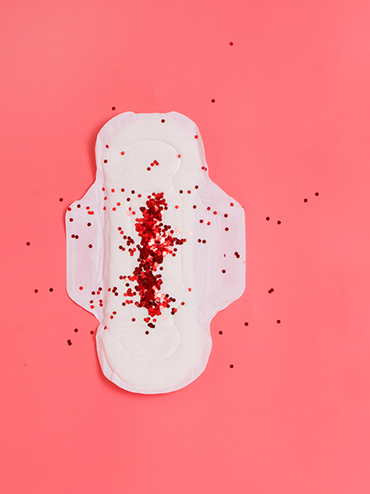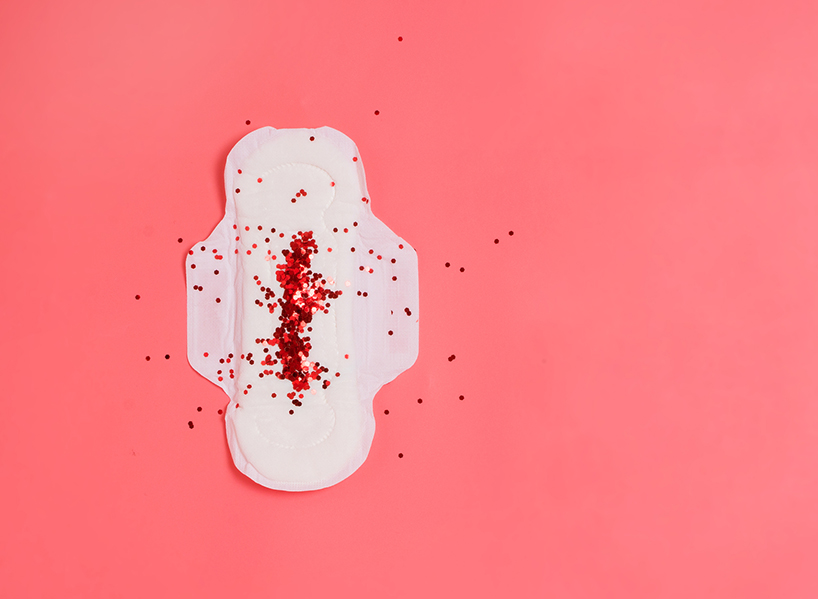B.C.’s New Order Proves That Period Poverty in Canada Is Real
We commend B.C. for starting the conversation, now the rest of the country needs to catch up ASAP


Let’s talk about periods.
On April 5, the government of British Columbia announced that all B.C. public schools are required to provide free pads and tampons for their students by the end of 2019. According to a statement by the government, the announcement comes with $300,000 in provincial startup funding, which the Ministry of Social Development and Poverty Reduction and Ministry of Education—under which the announcement was made—will use to work with school districts, community and education partners to identify gaps and ensure they have the funding needed. In addition, the government is providing a one-time grant of $95,000 to support the United Way Period Promise Research Project, which will go towards funding menstrual products for up to 10 non-profit agencies and research into “how best to provide services and products for people who menstruate.” This announcement makes B.C. the first and only province in Canada to mandate free menstrual products in all public school bathrooms, per the announcement.
Many people can't afford or don't have access to menstrual products. That's why by the end of 2019, all BC public schools will be required to provide free menstrual products for students. #bced #PeriodPromise https://t.co/cbPhcdXwrY pic.twitter.com/zLcjEmDeXL
— BC Government News (@BCGovNews) April 5, 2019
The Premier of British Columbia, John Horgan, shared the news on Twitter, writing, “Students should never have to miss school or extracurriculars because they don’t have access to menstrual products. Today we are announcing funding to provide students with equal and stigma-free access in BC schools.”
Students should never have to miss school or extracurriculars because they don’t have access to menstrual products. Today we are announcing funding to provide students with equal and stigma-free access in BC schools. #TogetherBC #PeriodPromise #bced https://t.co/XZhFXuNcTZ
— John Horgan (@jjhorgan) April 5, 2019
Our first reaction? A BIG hell yes and snaps for everyone, because this kind of action is *long* overdue. And we’re not alone. The announcement was met with plenty of praise online, with social media users applauding B.C.’s provincial government for finally realizing the unfair and exorbitant cost of menstrual products, and the toll it can have on those who need them—both financially and emotionally.
But, as with anything good, it didn’t take long for the backlash to ensue. One popular critique: The idea that this very necessary initiative will cost non-menstruating taxpayers more money for something they shouldn’t be “on the hook” for. It’s that whole “if it doesn’t affect you than it’s not important” thing. You know it.
https://twitter.com/DustinG_esq/status/1114220352270417920
While we have made progress across Canada when it comes to access to menstrual products, including the end of the “Tampon Tax” in 2015 and an increasing number of drugstores providing these products to women who can’t afford them, the unfavourable response around B.C.’s new initiative reveals just how much stigma people who menstruate *still* experience over something their bodies are literally just do. (And for the record, those people aren’t just cisgender women; trans men and non-binary folks menstruate, too.) These angry tweets only reinforce the necessity for both better access to sanitary products, as well as greater education about the effects of period poverty.
#PeriodPoverty isn’t just a third-world issue
No, that’s not just a new hashtag. “Period poverty” is a term used to describe a lack of access to sanitary products, menstrual hygiene education, toilets, hand washing facilities and waste management. These barriers to access can come in many forms, but one of the biggest is money. The reality is, menstrual products are expensive. While that $3 to $4 may not seem like a big cost when you’re standing in the feminine hygiene aisle at the drugstore, that monthly expense adds up very quickly, especially for individuals who are struggling to make ends meet.
And we’re not just talking about the developing world. While it’s easy to shrug off period poverty as an overseas issue (an understandable misconception; documentaries, including the Oscar-winning doc Period. End of Sentence, often chronicle this issue in countries like India), it’s very much a Canadian problem as well.
A 2018 study by Plan International found that feminine hygiene products were one of the “top three material costs of being a woman.” The same study revealed that one-third of Canadian women under 25 have struggled to afford menstrual products for themselves or their dependents. In Canada, more than two million women live just at or below Statistics Canada’s low-income measure, with the highest rates of poverty among Indigenous women, women of colour, immigrants or those living with a disability. As Angela Mombourquette points out in a September 2018 article for Broadview, for many individuals who menstruate, the decision can come down to sanitary products or lunch for the day.
And limited access to products can have serious effects that go beyond your time of the month, with girls being unable to attend or having to leave school. Nearly 1 in 7 Canadian girls have missed school due to a lack of period protection, according to a 2018 Confidence and Puberty Survey by feminine hygiene brand Always.
“It’s part of the taboo, it’s part of the stigma,” Parliamentary Secretary for Gender Equity Mitzi Dean says of a lack of awareness among Canadians when it comes to period poverty in our country. “A lot of people don’t realize that so many people are struggling to get by; these products are one of the things that don’t get funded in families where there’s poverty, and it has such significant impacts on self-worth and self esteem.”
Speaking with high school students after the announcement, Dean—who has lobbied for accessible products and spread awareness of period poverty for the past few years—says she spoke with a female student who recounted being stressed about finding sanitary products. “She was telling me that every day [she and her friends] are sharing texts with each other about girls that are in school and need to get a product quickly,” Dean says of the student. “She wants to be able to concentrate in class and get on with her learning, but there’s all these logistics of needing to try and take care of each other and find and share menstrual products.”
Regardless of geography, one thing about period poverty is universal: It’s about human rights. Specifically, it’s an equal opportunity issue, one that sees people who menstruate held back simply due to a biological function.
“It’s a basic health right,” Dean says. “And when we hear that at least a quarter of women have not been able to purchase products that they need or products that are needed for their family, when we hear that families are having to choose between purchasing food or purchasing product—that is an inequality that needs to be eradicated and that puts people who live in poverty at a greater disadvantage.”
And that’s really not cool.
Despite the initiative, some people still don’t get it
Let’s just say this all together now: PERIODS. ARE. NORMAL!!! Literally over half of the population has them, but for some reason, a certain demographic (*ahem* cisgender men *ahem*) seems to have forgotten that. And because they’re not privy to a monthly visit from Aunt Flo, access to these necessities is deemed by many as an unnecessary and frivolous cost.
Another support that shouldn’t have to exist …. I am sure lots of women are grateful this is happening. #periodpoverty https://t.co/z6FHMv1IK2
— Holly (@hgillismac) April 6, 2019
But as many pointed out in the ensuing backlash to B.C.’s latest decision, these products are just as necessary and vital as stocked toilet paper rolls or soap dispensers. As one Twitter user responded to one of the critics: “I’ll expect to see you walking into a public bathroom with your own toilet paper from now on. Highly likely, right?”
I'll expect to see you walking into a public bathroom with your own toilet paper from now on. Highly likely, right?
— Kyle Tiney (@kyletiney) April 5, 2019
A *great* point. But if anything, the backlash just reminds us that there remains *a lot* to be learned—and un-learned—when it comes to positioning some people’s bodily functions as a burden or taboo. Dean recounts a conversation with a friend who has been in the school system for decades, who revealed that issues still arise with high school boys going in to girl’s bags, taking their sanitary items and making fun of them, just for having them. “That was happening 20 years ago, that is still happening in high school today,” Dean says. “That is not acceptable.”
This is a great step—but there’s still a long way to go
So, let’s not listen to some ignorant trolls. Instead, we need to implement this accessibility in *every* Canadian province (CC: Doug Ford) and beyond just the school bathroom. But more importantly, we need to make sure *all* women and communities are able to access these vital products—affordably. In remote, Northern communities, the price of pads and tampons can be astronomical, with a box of tampons costing upwards of $18 in some remote communities. This steep increase in price disproportionately affects Indigenous communities and the women who live there. While non-profit organizations like Saskatchewan-based Moon Time Sisters have worked hard to collect products and send care packages to high school-aged girls in Northern communities (supporting over 25 communities in the last two years!), we’d love to see more change at the provincial and federal level.
And so would Dean. “What I’m pitching now to everybody, businesses, my colleagues, to other agencies: what can they do to step up and reduce this barrier and reduce the stigma? Who else out there in the community, who runs a business, who employs people in offices, who else out there could do this and make sure there’s always free, accessible products in their washrooms? We could all do this,” she says.
And it’s the perfect time to do so, Dean says. “It’s just a really great time for women breaking taboos and talking about what they need,” she says. “It would be great if the federal government would step up straight away in several offices. They could make that decision and make sure there’s universal, free access to menstrual products,” she says. “We could all have this challenge and try to achieve this standard, federally and in each of the provinces, that wherever people who have periods go, they will always be able to find the free and accessible products that they need.”
FYI, Justin Trudeau, this would be *great* for your publicity right now.








